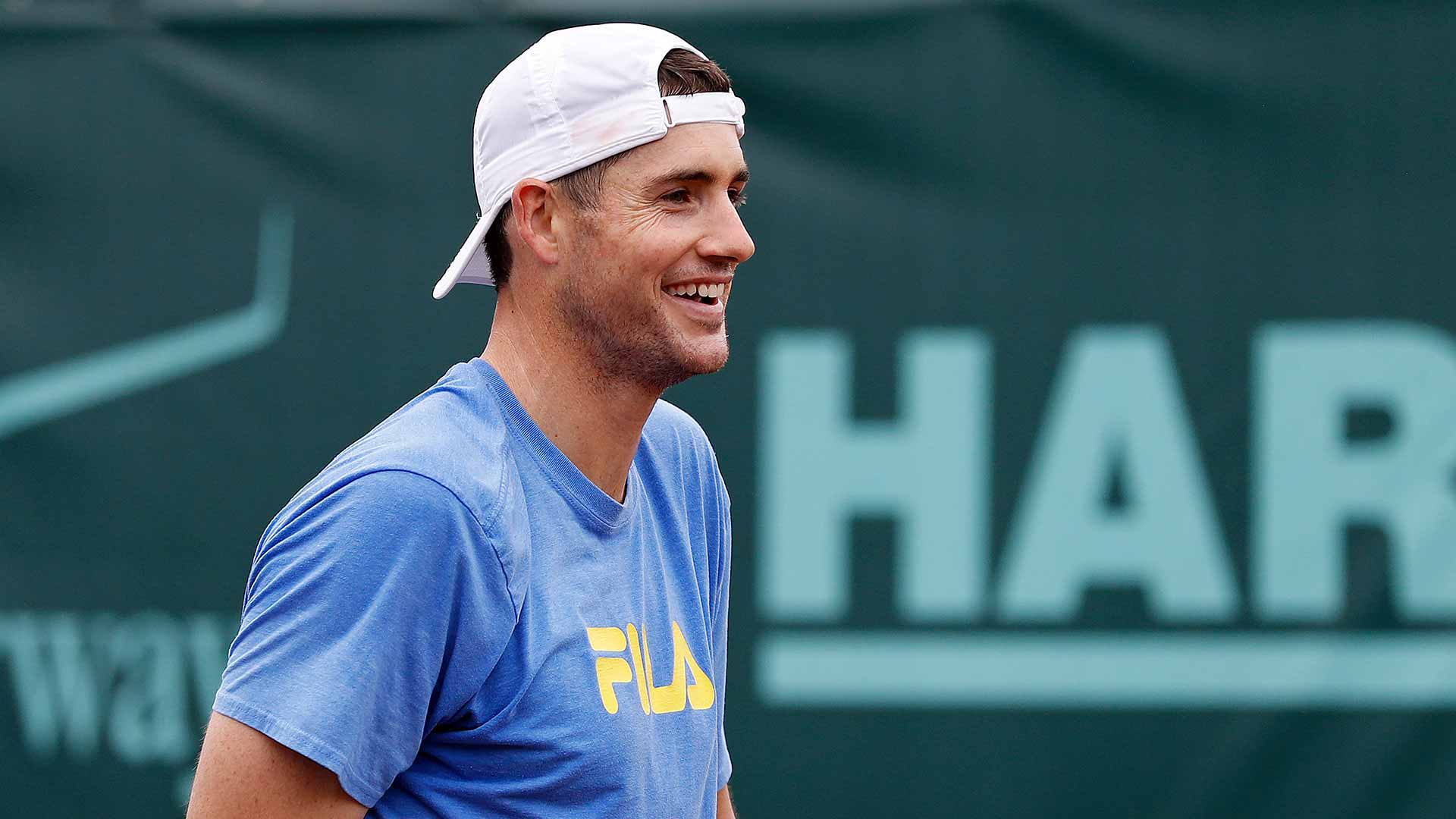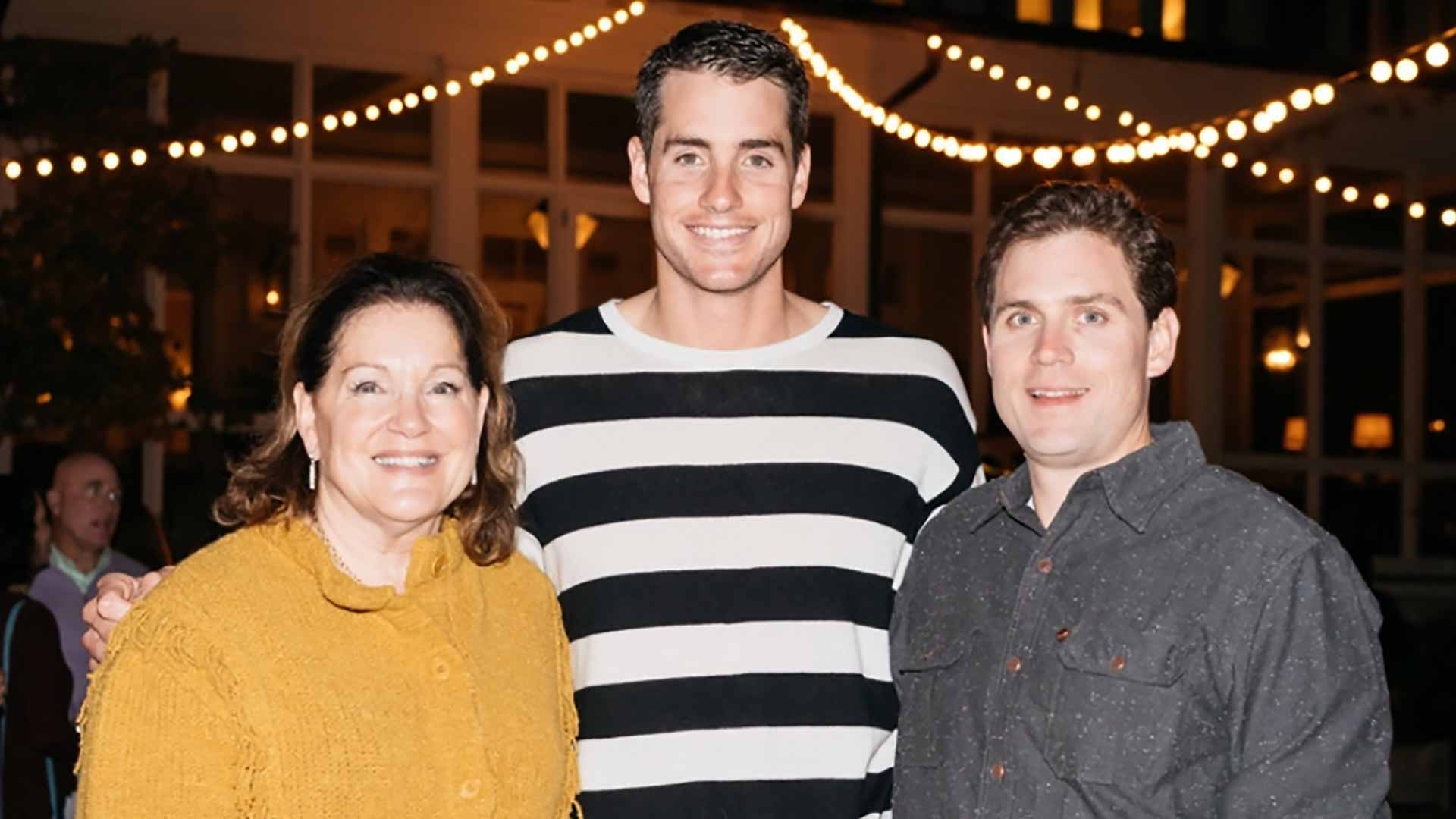Mike Bryan Awaits Baby Jake In COVID-19 Era
Mike Bryan Awaits Baby Jake In COVID-19 Era
Whether it’s foraging for diapers and wipes or isolating their first child from family and friends, Mike and Nadia Bryan confront the same challenges all expectant parents face in these challenging times
This time of the year is normally peak season for Bob and me, with two of our favourite tournaments in Indian Wells and Miami. But with the arrival of my first baby less than a month away and the ATP Tour suspended due to the coronavirus, my focus is firmly on my life partner rather than my doubles partner.
I’m hunkered down with my wife Nadia in our home in Camarillo, California counting down the days to the birth of our first son in less than three weeks. Staying healthy and scrounging for some of life’s necessities has replaced chasing titles on the Tour.
Although no-one wanted this fight with COVID-19 and its life-changing consequences, it’s proven to be an opportunity for me to slow down, be with Nadia and just savour these moments in the final days of her pregnancy. I have seen how much joy it has brought to Bob’s life and how his priorities have shifted.
But it’s been far from a conventional countdown to the birth as baby basics like wipes and diapers have been stripped from store shelves.
Nadia had a baby shower planned with 20 people and, obviously, that wasn’t a good idea, so we cancelled it. It is unfortunate she didn’t have that experience, but people out there are dealing with a lot worse. I know friends who are losing their jobs. They are living paycheque to paycheque. They don’t have a lot of savings, so this is devastating for them. They are all in our thoughts.
Just like for everyone, the times present challenges. The simple necessities are tough to find. I’ve gone down to Whole Foods and Sprouts bright and early in the morning and there is always a line wrapped around the building and you can’t stand next to people; you are about 10 feet away from them. You go in there and there are no eggs, there is no milk. I haven’t seen bacon.

Back at home, however, the nursery is dialled in. We have got a boy coming, so the room is painted blue. We have got little aeroplanes painted on the wall, a map. We’ve got the crib, toys and it is looking good. We are ready for this little guy. Baby Jake. We have got the name picked out and we are pumped for this little guy. He is kicking.
While expectant dads at some hospitals are being excluded from delivery wards, I’m thankful to know that I will be with Nadia when baby Jake comes bouncing into the world because we’ll be using a birthing centre and midwife just a few miles from home.
Nadia wants to do all natural, like the holistic birth. She might go in the bathtub and have the baby. She doesn’t want any meds, no epidural like 99 per cent of people do in the States. She’s Slovakian and her whole family does it the natural way. Whenever it is time, we are just going to open the door, head to the birth centre and go to work.
One thing on our minds is that we won’t be able to share this joyous occasion with family and friends as we would like to. We are being super cautious because of the virus. We are on lockdown for the safety of the baby and Nadia’s health. My parents live down the street and Bob is around, although we’re not seeing a lot of him or the kids. We are just super careful, because you never know what complications can arise if she gets sick. When Jake comes, I definitely think we will just keep the baby in the house for the time being until they find a cure, this curve flattens or whatever. It is a bubble shield over the house right now.

Preparing for Jake’s birth has also helped to take my mind off the disappointment of our farewell season being interrupted by the tour suspension. The event we were really looking forward to playing was Indian Wells, where all the players were down there and raring to go. It is so beautiful and that’s our home tournament. We have so many people from California who come down and support us and we look forward to that first-round match on Stadium Court 1.
Missing Miami has also hurt. We were super stoked to go defend our title and that feels like Bob’s home tournament because he is a South Florida guy. It is unfortunate that we didn’t get to say our goodbyes to the fans in Indian Wells and Miami and now Europe is a wash-out with the cancellation of tournaments through Wimbledon. We just hope we can play the US Open one last time and some of the US hard-court tournaments.
We had always said that the US Open would be our last event but we have just got to wait and see. If we can’t play another match for the rest of the year, if we can’t play the US Open, then there is a possibility of playing on in 2021.
We are fighting Father Time, who is a tough opponent, although the bodies are fresh despite being nearly 42 because we are not putting a lot of strain on them right now. It’s all happened so quickly and I haven’t seen a lot of Bob, but we’ll have a discussion, for sure.
Right now, there are more important things to focus on as everyone in the country and the world has a role to play in beating this virus. Stay safe, everyone, and look after your family.
– As told to Paul Macpherson




